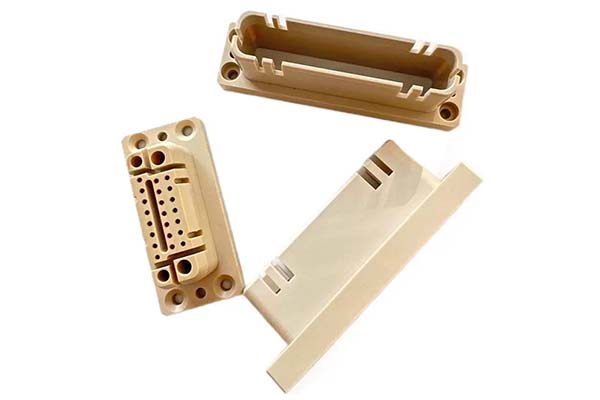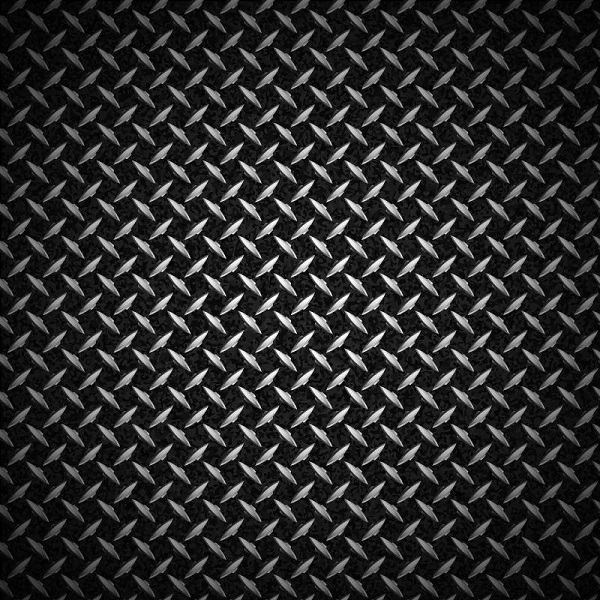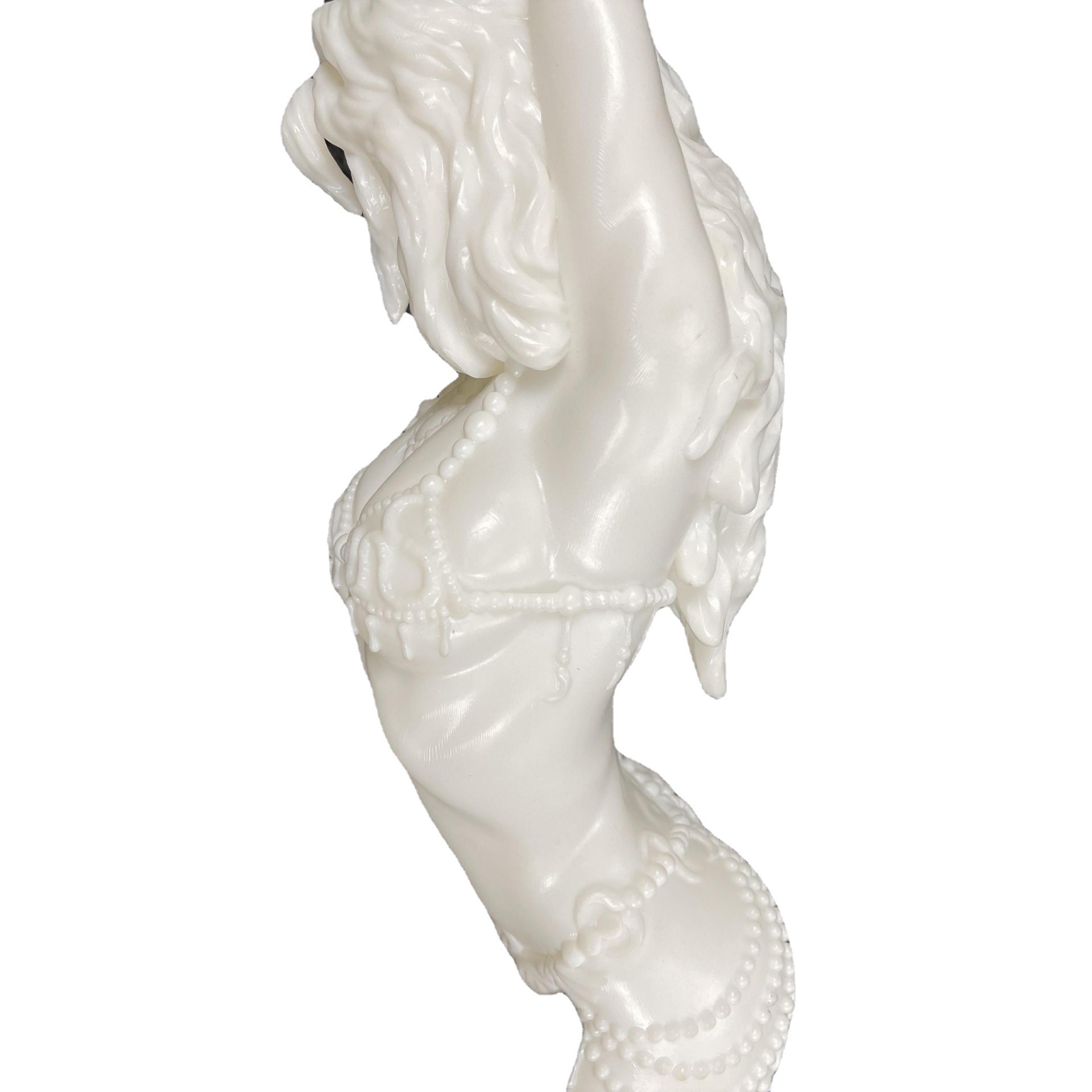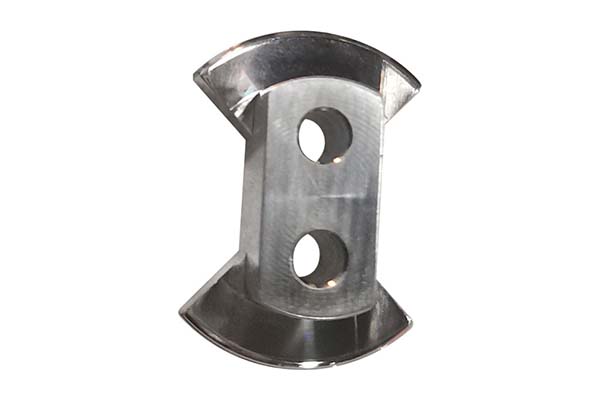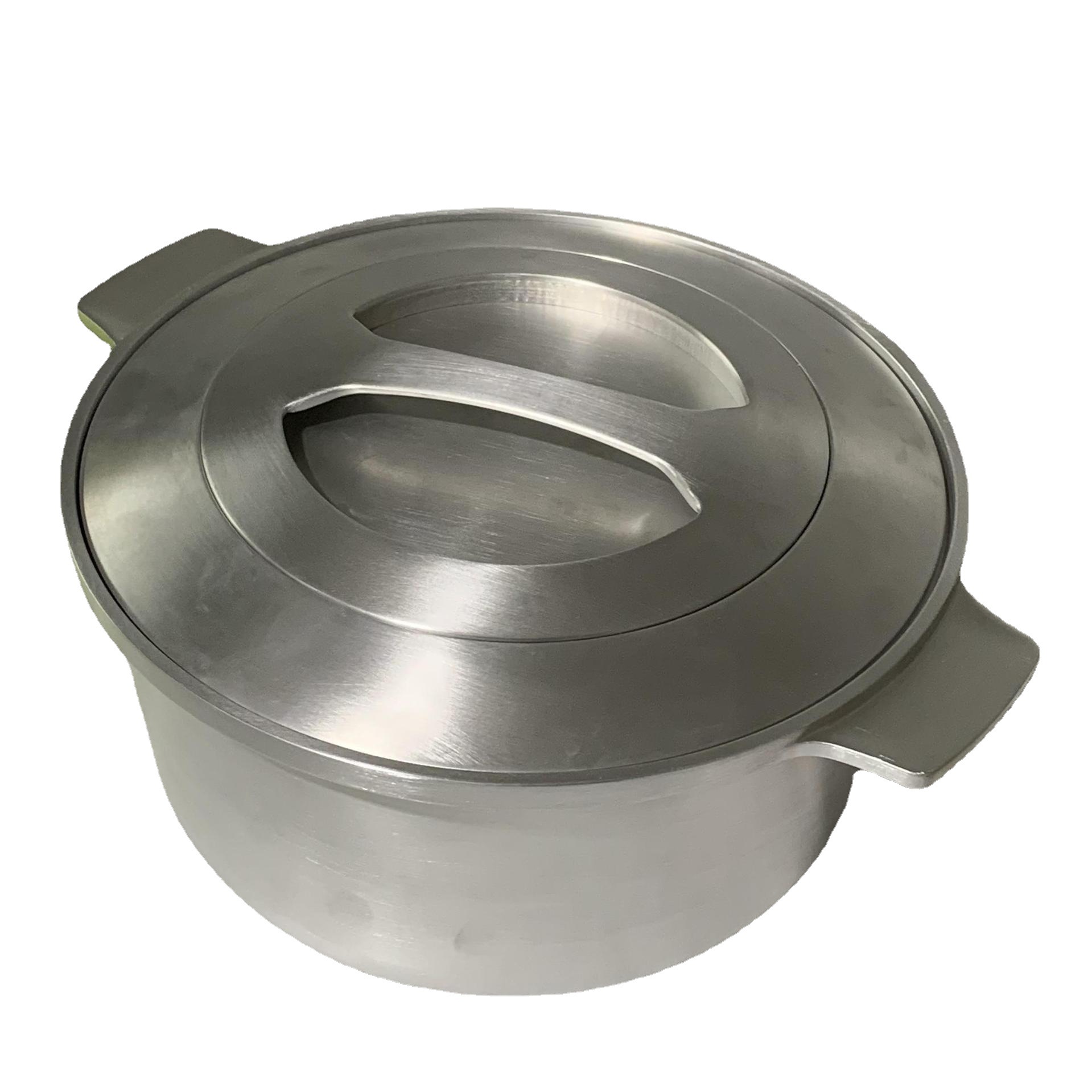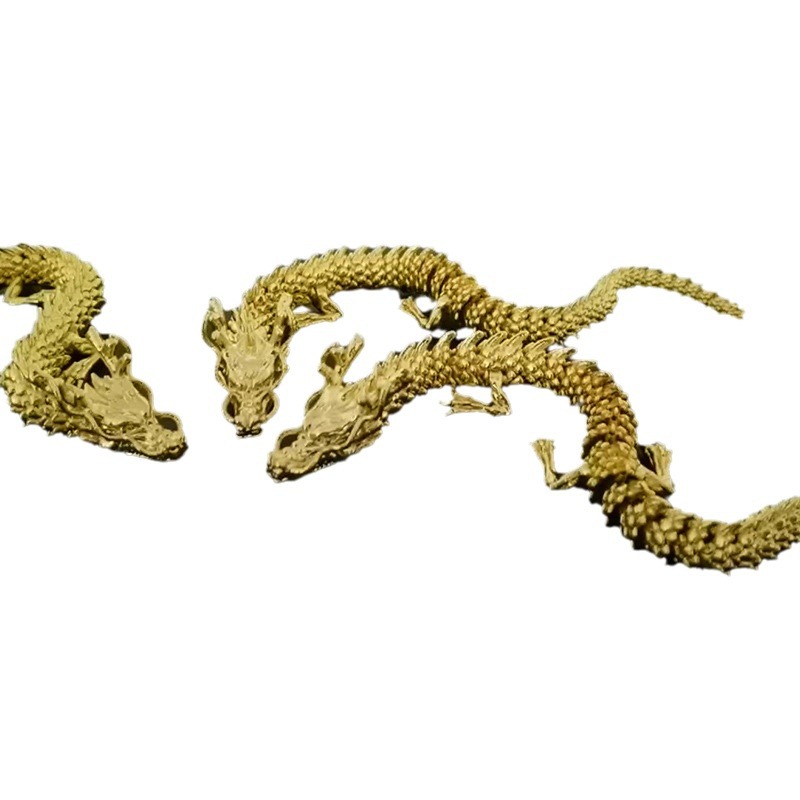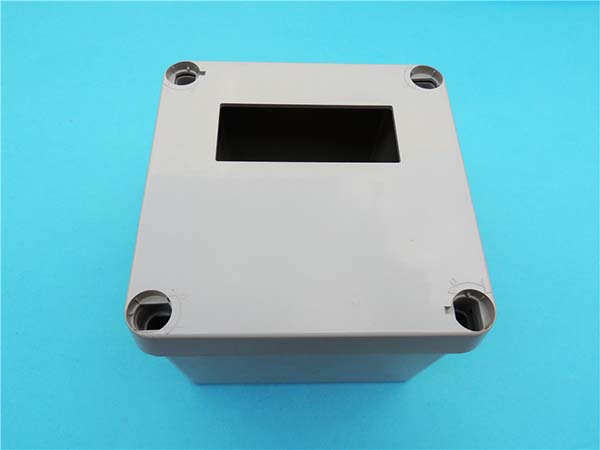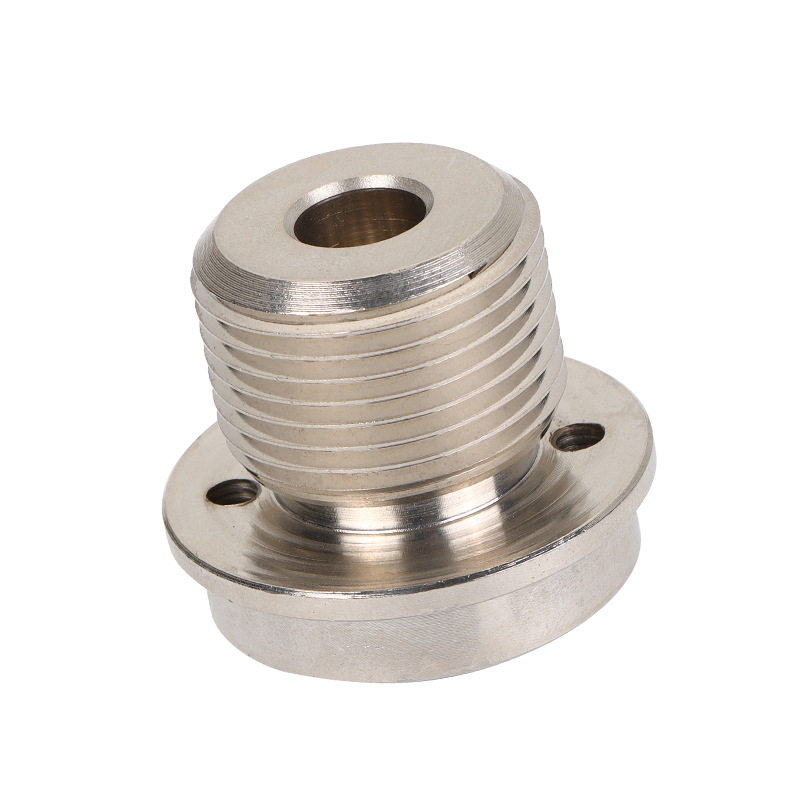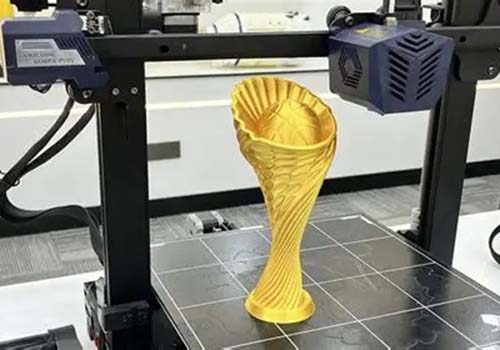Introduction to FDM 3D Printing
Definition and Basic Principle
FDM 3D printing, short for Fused Deposition Modeling, is a widely - used additive manufacturing technology. It operates on a straightforward yet innovative principle. The process begins with a 3D model created using computer - aided design (CAD) software or obtained from a 3D scanner. This digital model serves as the blueprint for the physical object that will be created.
The printer uses a spool of thermoplastic filament as its raw material. When the printing process commences, the filament is fed into a heated extruder nozzle. The nozzle heats the plastic to its melting point, turning it into a semi - liquid state. Once melted, the material is extruded through the nozzle, which moves in a precise, programmed path determined by the sliced layers of the 3D model. As the melted plastic is deposited, it quickly cools and solidifies, bonding to the previously laid layers.
The printer builds the object layer by layer, from the bottom up. Each layer is a cross - sectional slice of the 3D model, and as the layers accumulate, the three - dimensional object takes shape. For Yigu Technology example, if you were to print a small mechanical part, the printer would start by depositing the first layer, which forms the base of the part. Then, it would continue to add subsequent layers, gradually building up the walls, features, and internal structures of the part.
This layering approach is what sets 3D printing apart from traditional manufacturing methods. In traditional subtractive manufacturing, such as machining, material is removed from a larger block to create the desired shape. In contrast, FDM 3D printing adds material in a precise, controlled manner, allowing for the creation of complex geometries that would be difficult or impossible to achieve with traditional techniques.
The Mechanics of FDM 3D Printing
The 3D Printer Components
- Nozzle: The nozzle is a critical part of the FDM 3D printer. It is usually made of heat - resistant materials such as brass or hardened steel. The diameter of the nozzle determines the width of the filament strand that is extruded. Common nozzle diameters range from 0.2mm to 0.8mm. A smaller nozzle diameter allows for finer details in the printed object but generally results in a slower printing speed, as less material can be extruded at a time. For Yigu Technology example, when printing a small, detailed figurine, a 0.2mm nozzle might be used to capture the fine features like facial expressions. On the other hand, a larger nozzle, such as a 0.8mm one, is more suitable for printing large, solid objects quickly, as it can extrude more material per pass. The nozzle also needs to be able to heat up rapidly and maintain a consistent temperature to ensure the smooth melting and extrusion of the filament.
- Extruder: The extruder is responsible for feeding the filament into the nozzle at a controlled rate. There are two main types of extruders: direct - drive and bowden - style. In a direct - drive extruder, the motor is directly attached to the filament drive mechanism, providing more precise control over the filament feed. This type is often preferred for printing with flexible filaments or for applications that require high - precision extrusion, as it can better handle the challenges of feeding materials with different levels of stiffness. Bowden - style extruders, on the other hand, use a long tube to feed the filament from a spool to the nozzle. The motor is located further away from the nozzle, which can make the printer more compact, but it may also introduce some flexibility in the filament feed, potentially affecting the accuracy of extrusion. The extruder uses a set of gears to grip the filament and push it forward. These gears need to be properly maintained to ensure a smooth and consistent feed. If the gears become worn or dirty, they may slip, causing inconsistent extrusion and potentially ruining the print.
- Print Bed: The print bed, also known as the build platform, provides a stable surface for the printed object to be built upon. It is usually made of materials like aluminum, glass, or a flexible magnetic sheet. The temperature of the print bed can be adjusted, which is crucial for ensuring good adhesion of the first layer of the print. For Yigu Technology example, when using ABS filament, a heated print bed (usually around 100 - 120°C) helps to prevent warping and ensures that the first layer sticks firmly to the bed. Some print beds have a textured surface or a special coating, such as PEI (Polyetherimide), which further improves adhesion. Additionally, the print bed needs to be leveled accurately. If the bed is not level, the distance between the nozzle and the bed will vary across the print area, leading to issues such as inconsistent layer heights, poor adhesion, or even nozzle collisions with the bed.
- Control System: The control system of an FDM 3D printer is like its “brain”. It consists of a motherboard, a microcontroller, and various sensors. The motherboard manages the communication between different components of the printer, such as the extruder, the print bed, and the motors that move the nozzle. The microcontroller is responsible for interpreting the G - code (a language that contains instructions for the printer on how to move the nozzle, extrude material, and control temperatures) and sending signals to the appropriate components to execute the print. Sensors play a vital role in the control system. Temperature sensors, such as thermistors, are used to monitor the temperature of the nozzle and the print bed, ensuring that they stay within the set ranges. Some advanced printers also have filament - run - out sensors, which can detect when the filament is about to run out and pause the print, preventing a failed print due to lack of material.
These components work in harmony. The control system receives the 3D model data in the form of G - code, which is then used to control the movement of the extruder, the heating of the nozzle and print bed, and the deposition of the filament layer by layer to create the final 3D object.
Material Feeding and Melting Process
The material feeding process in FDM 3D printing begins with a spool of thermoplastic filament. The filament is typically made of materials like PLA (Polylactic Acid), ABS (Acrylonitrile Butadiene Styrene), PETG (Polyethylene Terephthalate Glycol - modified), or nylon. The spool is placed on a holder, which can be a simple spindle - like structure or a more complex tension - controlled system.
The filament is then fed into the extruder. In most cases, the extruder has a pair of drive gears. One gear is driven by a stepper motor, while the other is an idler gear. The teeth of these gears grip the filament. As the stepper motor rotates, it pulls the filament forward towards the nozzle. The speed at which the filament is fed is controlled by the control system, which adjusts the rotation speed of the stepper motor based on the G - code instructions.
Once the filament reaches the nozzle, it enters a heating chamber. The nozzle contains a heating element, usually a resistive heater. When an electric current passes through the heater, it generates heat, which raises the temperature of the nozzle. Different materials require different melting temperatures. For Yigu Technology example, PLA typically melts at around 180 - 220°C, while ABS requires a higher temperature range of 220 - 250°C. The control system monitors the temperature of the nozzle using a temperature sensor (such as a thermistor) and adjusts the power supplied to the heater to maintain the desired melting temperature.
As the filament enters the heated nozzle, it starts to soften and then melt. The melting process is crucial for the smooth extrusion of the material. If the temperature is too low, the filament may not melt completely, leading to inconsistent extrusion, clogging of the nozzle, or a rough - textured print. On the other hand, if the temperature is too high, the material may become too fluid, causing over - extrusion and a loss of dimensional accuracy.
Layer - by - Layer Deposition and Solidification
After the material is melted in the nozzle, it is ready to be extruded for layer - by - layer deposition. The nozzle moves in a precise path determined by the G - code instructions. These instructions are generated by slicing the 3D model into thin cross - sectional layers. Each layer represents a horizontal slice of the final 3D object at a particular height.
As the nozzle moves, it extrudes the melted filament in a continuous stream. The extruded filament is deposited onto the print bed or the previously deposited and solidified layer. The width and height of the extruded filament are carefully controlled. The width of the extrusion is related to the nozzle diameter and the extrusion settings, while the height of each layer (layer height) is typically set in the slicing software and can range from as low as 0.05mm for high - resolution prints to 0.3mm or more for faster, lower - resolution prints.
As soon as the melted filament is extruded, it starts to cool down. In many FDM printers, a cooling fan is used to accelerate the cooling process. The fan blows air over the freshly extruded filament, causing it to solidify quickly. The solidification is essential for the filament to hold its shape and bond to the underlying layer. When the first layer is deposited on the print bed, good adhesion between the filament and the bed is crucial. This is why the print bed is often heated and may have a special surface treatment to improve adhesion.
Once the deposition of a layer is complete, the print bed either lowers (in most common FDM printers) or the nozzle raises by a distance equal to the layer height. Then, the nozzle moves to the starting position for the next layer and begins the deposition process again. This process is repeated layer by layer until the entire 3D object is constructed. The layers bond together due to the heat - transfer and the physical contact between the molten and solidified materials. However, the bond strength between layers can be affected by factors such as the printing speed, temperature, and the quality of the filament. If the layers do not bond well, it can lead to a weak structure or even separation between layers, compromising the integrity of the final 3D printed object.
Applications of FDM 3D Printing
In the Manufacturing Industry
FDM 3D printing has revolutionized the manufacturing industry in multiple ways. One of the primary applications is in the production of custom - made and low - volume parts. For example, in the automotive industry, manufacturers can use FDM 3D printing to create specialized components for concept cars or limited - edition models. A car manufacturer might need a unique air intake manifold for a new high - performance vehicle prototype. With FDM 3D printing, they can design and produce this complex part in a relatively short time. In contrast, traditional manufacturing methods such as injection molding would require the creation of expensive molds, which is not cost - effective for low - volume production.
In terms of product prototyping, FDM 3D printing significantly accelerates the development cycle. A study by a leading manufacturing research firm found that companies using 3D printing for prototyping reduced their product development time by an average of 30 - 40%. Consider a consumer electronics company developing a new smartphone. Using FDM 3D printing, they can quickly create multiple iterations of the phone's casing, buttons, and internal component holders. Designers can test the fit, form, and function of these prototypes, making design changes on - the - fly. This iterative process allows for faster identification of design flaws and improvements, ultimately leading to a better - refined final product.
Moreover, FDM 3D printing enables the production of parts with complex geometries that are difficult or impossible to achieve through traditional manufacturing. In the aerospace industry, where lightweight and high - strength components are crucial, 3D - printed parts can have internal lattice structures that reduce weight while maintaining structural integrity. For instance, a 3D - printed aircraft bracket can be designed with a honeycomb - like internal structure. This not only makes the part lighter, which improves fuel efficiency, but also provides the necessary strength to withstand the forces experienced during flight.
In the Education Sector
FDM 3D printing has become an invaluable tool in the education sector, especially in science, technology, engineering, and mathematics (STEM) education. It helps students understand complex scientific concepts in a more tangible way. For example, in a biology class, students can 3D - print models of cells, DNA structures, or anatomical organs. A 3D - printed model of a cell allows students to see the different organelles in three dimensions, rather than just looking at a flat textbook illustration. This hands - on approach enhances their understanding and retention of the material.
In an engineering curriculum, students can use FDM 3D printing to bring their design ideas to life. They can design and print prototypes of mechanical parts, such as gears, pulleys, or small - scale engines. A group of students at a high school in California were tasked with designing a more efficient water - pumping system. Using 3D printing, they were able to quickly prototype different pump designs, test them, and make improvements. This process not only taught them about engineering principles but also about the iterative nature of the design process.
FDM 3D printing also fosters creativity and innovation among students. It encourages them to think outside the box and come up with unique solutions to problems. For instance, in an art - integrated STEM project, students might design and 3D - print a kinetic sculpture that combines elements of art and engineering. This cross - disciplinary approach helps students develop a broader skill set and a more well - rounded perspective.
In the Art and Design World
In the art and design world, FDM 3D printing has opened up new creative possibilities. Artists can use 3D printing to create sculptures and art installations with intricate and complex designs. For example, the artist Rok Hrastnik creates 3D - printed sculptures that explore the relationship between nature and technology. His pieces often feature organic - like shapes with a high level of detail, which would be extremely difficult to achieve using traditional sculpting methods.
In the fashion industry, FDM 3D printing is being used to create avant - garde designs and prototypes. Designers can create unique fabric patterns and structures that are not possible with traditional sewing techniques. A fashion designer might use 3D printing to create a dress with a lattice - like, 3D - printed bodice that provides both style and structural support. This not only offers a new aesthetic but also allows for more functional and innovative designs.
Product designers also benefit from FDM 3D printing. They can quickly create prototypes of new products, such as furniture, household items, or consumer electronics. A product designer working on a new ergonomic chair can use 3D printing to create a full - scale prototype. This allows them to test the comfort, functionality, and visual appeal of the chair before moving on to mass production. It also enables them to make design changes easily, reducing the cost and time associated with traditional prototyping methods.
Comparison with Other 3D Printing Technologies
SLA (Stereolithography Apparatus)
The following Yigu Technology table summarizes the comparison:
| Comparison Items | FDM | SLA |
| Principle | Extrudes melted thermoplastic filament | Cures liquid photopolymer resin with a laser |
| Materials | Thermoplastic filaments (PLA, ABS, etc.) | Liquid photopolymer resins |
| Precision (Typical Layer Height) | Around 0.1mm (minimum) | As low as 0.025mm |
| Surface Quality | Visible layer lines, relatively rough | Smooth |
| Equipment Cost | Generally lower, especially desktop models | Higher, especially industrial models |
| Material Cost | Lower per unit volume | Higher per unit volume |
| Post - processing | Usually simple, may need support removal | More complex, including washing and additional UV curing |
SLS (Selective Laser Sintering)
SLS, or Selective Laser Sintering, uses a high - power laser to sinter powdered materials, such as nylon, polycarbonate, or metal powders, layer by layer.
One of the key differences between FDM and SLS is the material form. FDM uses filaments, while SLS uses powders. This allows SLS to create parts with complex internal structures without the need for additional support structures, as the unsintered powder can support the printed part during the process. For example, in the aerospace industry, SLS can be used to create lightweight parts with intricate lattice - like internal structures that are difficult to achieve with FDM.
SLS also offers high - strength and heat - resistant parts. The sintered powder forms a strong bond, making the printed parts suitable for applications that require high mechanical properties. In contrast, FDM - printed parts, especially those made from common filaments like PLA, may not be as strong or heat - resistant.
However, SLS has some limitations. The surface finish of SLS - printed parts is often rough and may require post - processing such as sanding or coating to achieve a smooth surface. FDM, while also having a relatively rough surface, can sometimes be easier to post - process for a better finish in some cases.
Equipment cost is another significant difference. SLS printers are typically very expensive, often in the hundreds of thousands of dollars for industrial - grade machines. This high cost is due to the need for high - power lasers, precise powder - handling systems, and temperature - controlled environments. FDM printers, especially desktop models, are much more affordable, making them accessible to a wider range of users, from hobbyists to small businesses.
In terms of application, SLS is often used in industries where high - performance parts are required, such as aerospace, automotive, and high - end tooling. FDM, with its lower cost and ease of use, is more suitable for prototyping, small - scale production, and educational applications. For instance, a car manufacturer might use SLS to produce functional prototypes of engine components that need to withstand high temperatures and mechanical stress, while a small design studio might use FDM to quickly create low - cost prototypes of product designs for client approval.
Conclusion
Yigu Technology FDM 3D printing, with its layer - by - layer construction process, has emerged as a game - changing technology across multiple industries. Its principle, which involves melting and extruding thermoplastic filaments, provides a relatively simple yet effective way to create three - dimensional objects.
The technology offers numerous advantages, such as cost - effectiveness, especially for low - volume production and prototyping. It allows for a high degree of design freedom, enabling the creation of complex geometries that are difficult to achieve with traditional manufacturing methods. The wide range of available materials, including PLA, ABS, PETG, and more, caters to different application requirements in terms of strength, flexibility, and heat - resistance.
In the manufacturing industry, FDM 3D printing has accelerated product development cycles, reduced costs for custom - made and low - volume parts, and enabled the production of complex components. In healthcare, it has revolutionized the creation of customized medical devices and surgical models, improving patient care. In education, it has enhanced STEM learning by providing a hands - on approach to understanding complex concepts, and in the art and design world, it has opened up new creative possibilities.
FAQ
- What is the best material for FDM 3D printing if I need high - strength parts?
Nylon is a good choice for high - strength parts as it offers excellent mechanical properties, including high tensile strength and toughness. Carbon - fiber - reinforced filaments, such as those made from PLA or ABS with added carbon fibers, also significantly increase the strength of the printed parts.
- Can FDM 3D printers print large - scale objects?
While desktop FDM 3D printers have size limitations, industrial - grade FDM printers are available with larger build volumes. Some large - format FDM printers can print objects up to several meters in size. Additionally, for extremely large objects, techniques like printing in parts and then assembling them can be used.
- How can I improve the surface quality of FDM 3D - printed objects?
You can reduce the layer height in the slicing software settings, which will result in finer layers and a smoother surface. Sanding the printed object after it is complete can also improve the surface finish. Applying a coat of primer or a specialized 3D - printing surface treatment can further enhance the appearance and smoothness of the object.
